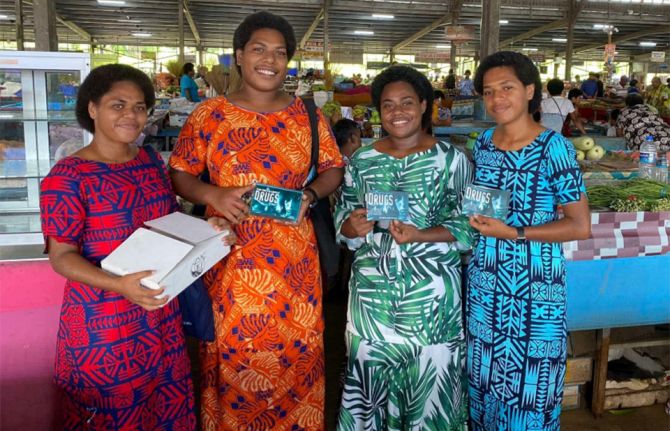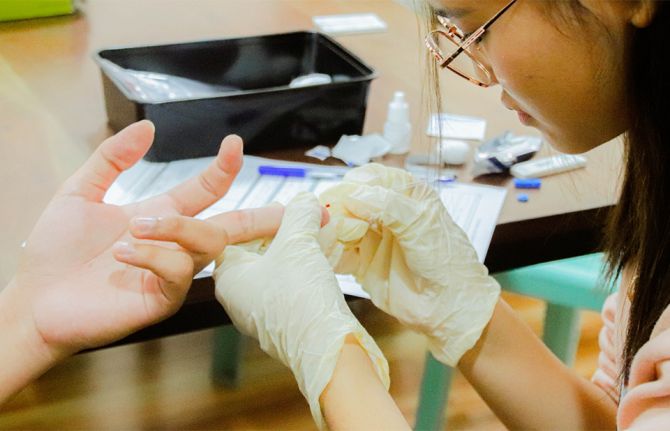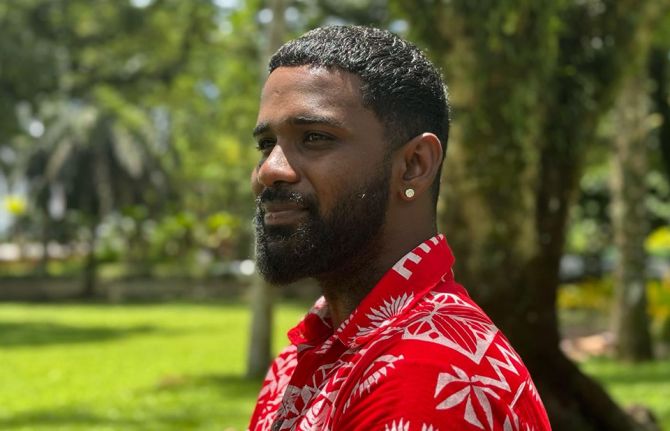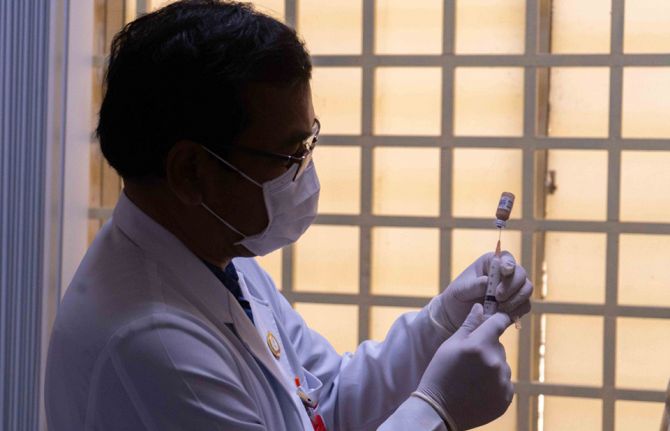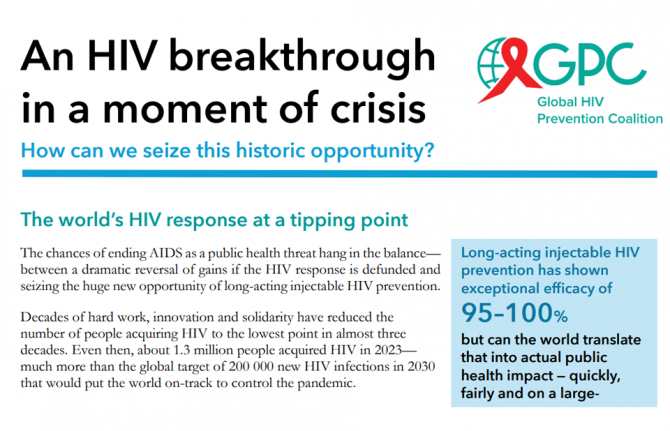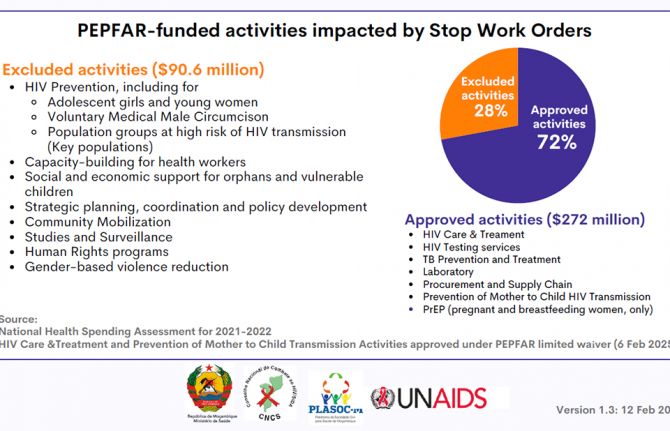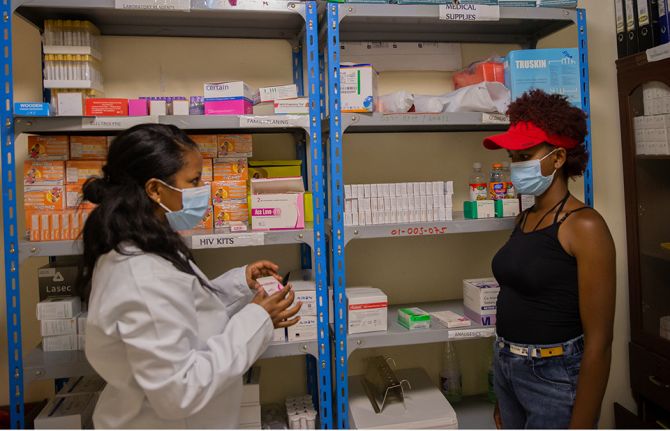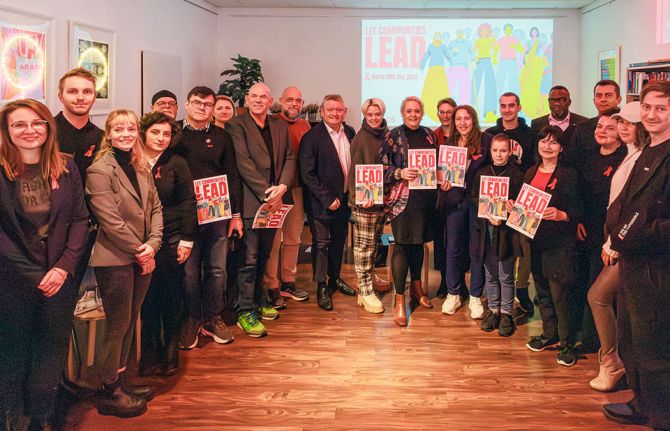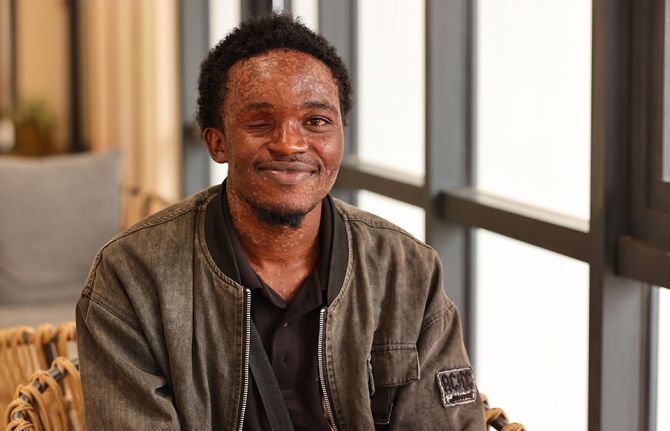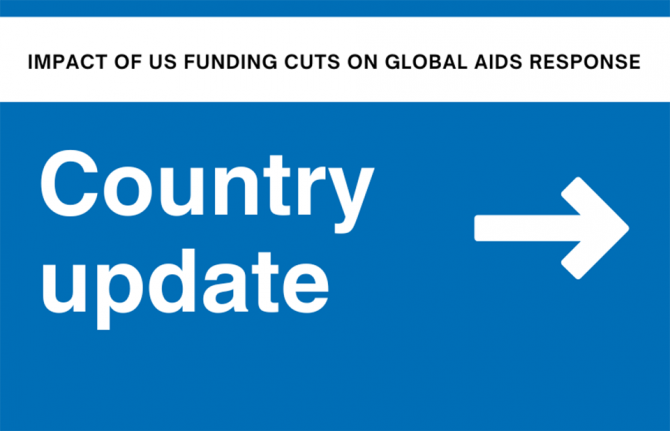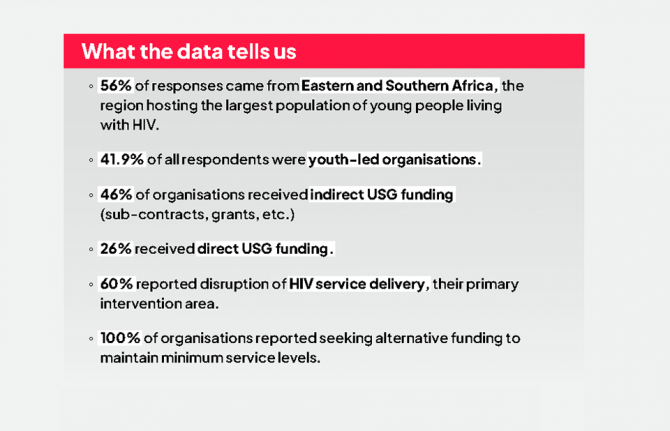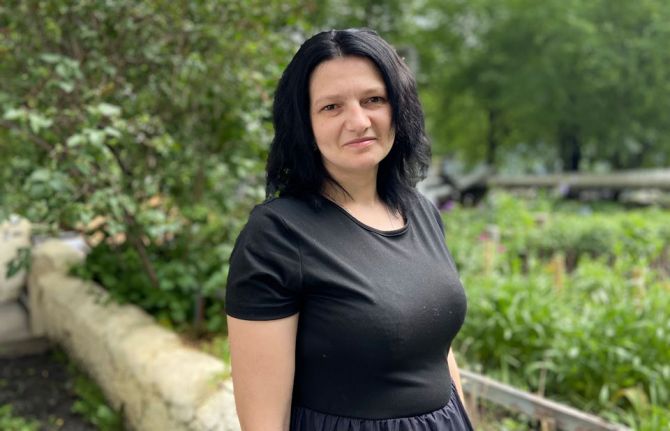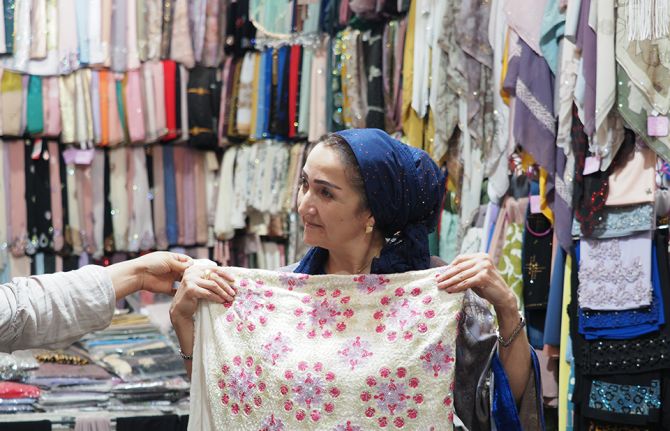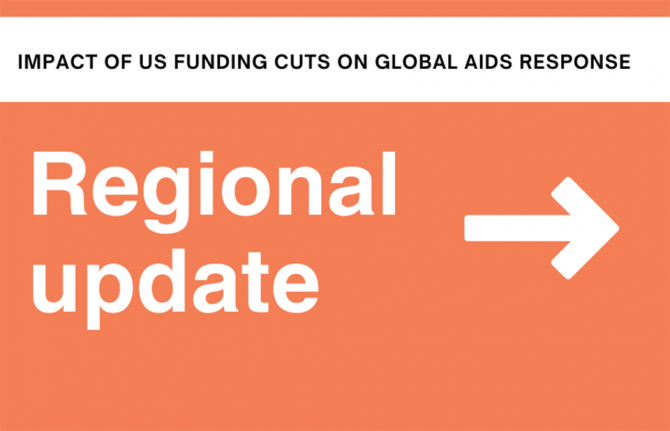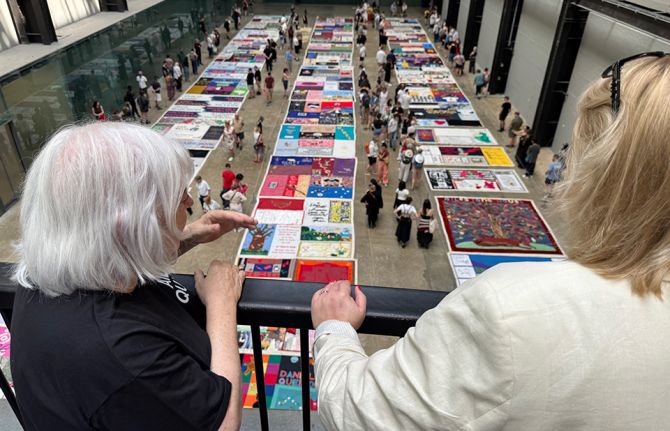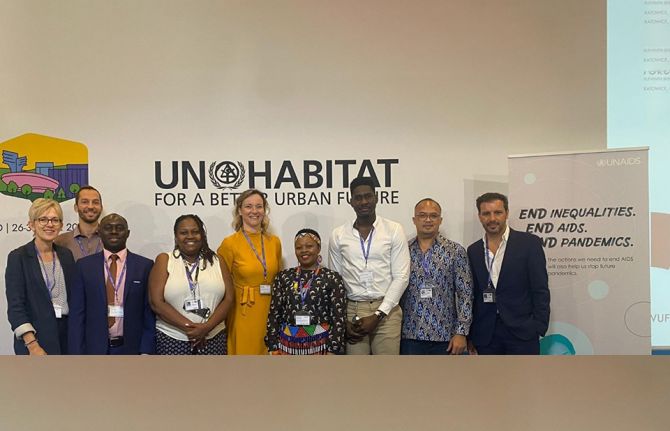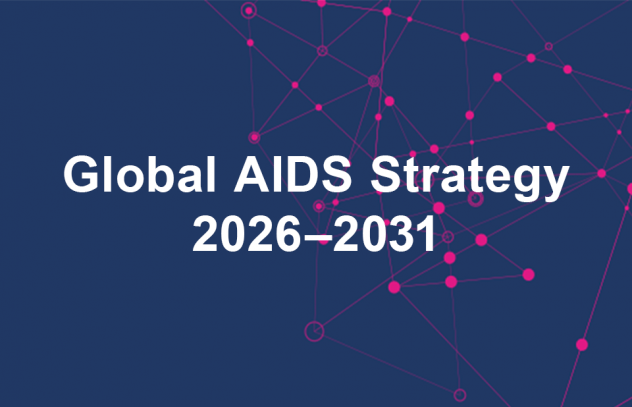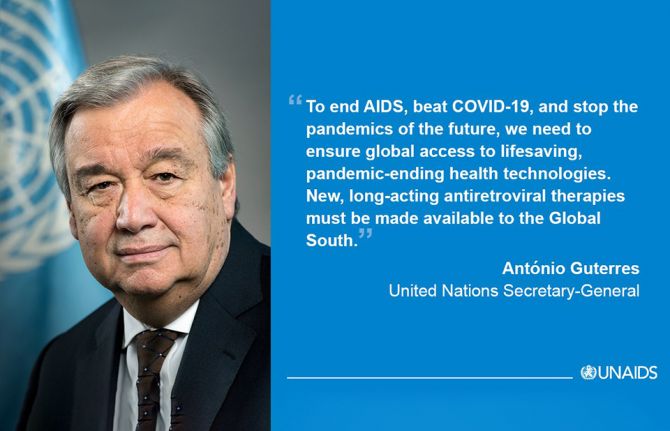
Feature Story
China Central Television names news anchor and National UNAIDS Goodwill Ambassador James Chau its International Journalist of the Year
19 January 2011
19 January 2011 19 January 2011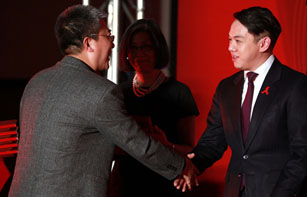
CCTV Vice Chief Editor Huang Chuanfang presented James Chau (right) with the award CCTV International Journalist of the Year at a ceremony in Beijing on 19 January 2011. Credit: CCTV News
China Central Television has named CCTV News Anchor and National UNAIDS Goodwill Ambassador James Chau its International Journalist of the Year. The prize, the first in the network’s history, was given for his coverage of the 2010 Manila Hostage Crisis, and in recognition of his reporting to highlight the rights of HIV-positive people. The award was presented today by CCTV Vice Chief Editor Huang Chuanfang at a ceremony in Beijing.
Mr Chau was appointed National UNAIDS Goodwill Ambassador for China in 2009. His news programmes are watched in over 100 countries, which he has used as a platform to inform millions of viewers about HIV and the AIDS response. He has spoken on camera in a rare exclusive with the singer and Chinese AIDS Ambassador Peng Liyuan and, in April 2010, covered the Chinese Government’s historic decision to remove its two decade HIV-related travel ban.
I congratulate Mr Chau on receiving this award which acknowledges his contribution to international news reporting in China including highlighting the global issue of HIV
Michel Sidibé, UNAIDS Executive Director
“I congratulate Mr Chau on receiving this award which acknowledges his contribution to international news reporting in China including highlighting the global issue of HIV,” said Michel Sidibé, UNAIDS Executive Director. “Mr James Chau is also a role model for today's youth through his tireless personal advocacy and participation in a number of international fora.”
In 2010 James Chau reported live from the International AIDS Conference in Vienna and at the Millennium Development Goals Summit in New York, where he interviewed UN Secretary-General Ban Ki-moon, UNAIDS Executive Director Michel Sidibé, Indian Foreign Secretary Nirupama Rao, U.S. AIDS Envoy Eric Goosby and former President of Botswana Festus Mogae.
He also spoke on television with AIDS activist Annie Lennox, as well as French scientist Françoise Barré-Sinoussi who won the Nobel Prize for co-discovering HIV. Meanwhile, Mr Chau’s week-long special on CCTV News for World AIDS Day 2010 was the first extensive coverage of its kind in the Chinese state media. It featured three Health Ministers: China's Chen Zhu, South Africa's Aaron Motsoaledi and Rwanda's Richard Sezibera.
CCTV News is the international division of China Central Television and broadcasts globally 24 hours a day, together with the station’s other channels it reaches out to the country’s 1.3 billion population.

Feature Story
Sex workers and loggers in Guyana challenge HIV together
18 January 2011
18 January 2011 18 January 2011
Kay Forde discusses HIV prevention with loggers
Credit: ILO
Kay Forde has been a sex worker in Guyana for more than 20 years. She is an AIDS activist too. As secretary of the One Love Organization, a non-governmental organization addressing the HIV needs of sex workers, Ms Forde is committed to making a difference in the Kwakwani region, Guyana.
This commitment involves not only advocating for the rights of sex workers to live free of stigma and discrimination, with access to good information about HIV, it also extends to working with their clients. Many of the clients earn their living in the wood logging industry.
There are some 13,000 loggers in Guyana and they are a significant segment of the migrant worker population. With forests generally found in isolated areas, there can be a lack of regular access to both condoms and correct knowledge of how HIV is transmitted, which increases vulnerability to infection. Sex workers themselves are disproportionally affected by the virus with an HIV prevalence of around 16%, compared to an adult HIV prevalence in Guyana of 1.2%.
With this in mind, in 2009 One Love joined forces with the International Labour Organization (ILO), the Government of Guyana, the US Department of Labour and the PEPFAR HIV/AIDS Workplace Education Programme. One of the principle aims is to encourage HIV prevention among loggers with a core package of services. This includes condom promotion, voluntary HIV counselling and testing, and referrals for sexually transmitted infections, which together aim to increase risk recognition and promote safer sex.
The strategy to use the One Love Organization is working well, since awareness is now being created among both the organization’s members and the loggers on the importance of adopting safer sexual practices.
Sean Wilson, ILO National Project Coordinator
The work with loggers intensified in April 2010 when the ILO entered into a partnership with the Upper Berbice Forest and Agriculture Producers Association (UBFAPA) to educate its members. Fifteen of the One Love team and affiliate trainers travelled from camp to camp conducting interactive group discussions.
Ms Forde believes that the loggers of Kwakwani have become more aware of HIV and are more willing to discuss intimate sexual issues. “They come and ask questions. They’re attentive and interactive and it’s very fulfilling to have them listen and get full explanations on health and sexual matters,” she said.
Charles Swaving, a logging camp supervisor working near Kwakwani, who attended a One Love discussion in July last year, agrees. He says he was grateful for the opportunity to find out correct information about HIV as well as the need to treat those living with the virus with dignity and respect. He vows to remain HIV-free.
According to Sean Wilson, ILO National Project Coordinator, this successful partnership demonstrates that sex workers can be powerful advocates for HIV prevention. “The strategy to use the One Love Organization is working well, since awareness is now being created among both the organization’s members and the loggers on the importance of adopting safer sexual practices.”
The project is ongoing and there are plans to re-engage loggers already reached and examine the impact of substance use on HIV transmission as well as how transmission risks can be reduced overall. There will also be greater efforts made to ensure a regular and reliable supply of condoms to loggers. There is also an issue of how loggers can access condoms in remote locations where transportation costs are high.
During the coming years, the project will continue working with the UBFAPA to engage more of its membership in what is seen as a vital education process. The ILO also intends to replicate this partnership with other sex workers’ organizations to reach different groups of workers across the country.

Feature Story
Norway urged to continue commitment to AIDS response
14 January 2011
14 January 2011 14 January 2011
During his visit to Norway Michel Sidibé met with Villa Kulild, Director General of the Norwegian Development Agency, NORAD (left) and former Norwegian AIDS Ambassador Sigrun Møgedal who has been recently honoured by Norway for her contribution to the global AIDS response. Credit: Norwegian Agency for Development Cooperation
Norway is a longstanding supporter of the AIDS response and has shown outstanding leadership on AIDS issues both domestically and abroad. Norway has been increasingly present in the African region, providing support on a range of HIV issues but perhaps most notably on HIV prevention.
UNAIDS Executive Director Michel Sidibé met with key partners in Norway’s AIDS response to stress the importance of keeping AIDS at the very top of the health and development agenda.
On the first day of the two-day visit, Mr Sidibe met with Erik Solheim, Minister for the Environment and International Development to thank him personally for Norway’s leadership and support, and highlight the concrete results of collective investments in the AIDS response.
Bold actions and smart choices have saved lives. Commitment and investment in the AIDS response has helped to reduce new HIV infections by nearly 20% in the past 10 years and reduce AIDS-deaths by 20% in the past five years.
UNAIDS Executive Director Michel Sidibé
“Bold actions and smart choices have saved lives,” said Mr Sidibé. “Commitment and investment in the AIDS response has helped to reduce new HIV infections by nearly 20% in the past 10 years and reduce AIDS-deaths by 20% in the past five years. With continued commitment we have an opportunity to build on these gains and save yet more lives.”
Minister Solheim echoed the importance of continued support to the AIDS response, “There have been made great achievements the last decade. But we must not be complacent. The fight is far from over.”
During the meeting the Minister told Mr Sidibé that Norway believes it is critical for the development agenda in Africa to support HIV programmes and announced that Norway will be increasing its annual contribution to the Global Fund to Fight AIDS, tuberculosis and Malaria by 20% in 2011, in acknowledgement of the importance of scaling-up resources for HIV.

Mr Michel Sidibé, UNAIDS Executive Director with Mr Erik Solheim, the Norwegian Minister of the Environment and International Development met in Oslo, 13 January 2011.
Credit: The Norwegian Ministry of the Environment
For the first time in 2009, Norway dedicated 1% of its Gross National Income to Overseas Development AID and despite the current economic climate, has pledged to maintain this rate into 2011. It has also committed NOK 1.5 billion over 10 years to strengthen health systems in developing countries which will play an essential role in advancing the AIDS response.
On the second day of his visit Mr Sidibé will meet with Norwegian representatives at both the Ministry for the Environment and the Ministry of Foreign Affairs.
Related

Feature Story
‘A better future’: New evidence shows triple antiretroviral drugs during pregnancy and breastfeeding can significantly reduce mother-to-child transmission of HIV
14 January 2011
14 January 2011 14 January 2011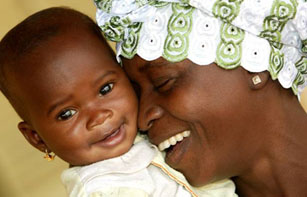
Credit: UNAIDS/P. Virot
The Lancet Infectious Diseases today published evidence from a World Health Organization-led study. The study showed that giving pregnant women living with HIV a combination of three antiretroviral (ARV) drugs from the last trimester, through delivery and six months of breastfeeding can reduce the risk of their babies being infected with HIV by more than 40%.
The study, named Kesho Bora which means ‘a better future’ in Swahili, was conducted between June 2005 and August 2008 in five sites in Burkina Faso, Kenya and South Africa. The randomized controlled trial aimed to assess the efficacy and safety of triple antiretroviral treatment to reduce mother-to-child transmission of HIV. This was compared to the use of single-dose nevirapine and zidovudine stopped after delivery, as had been recommended by the World Health Organization (WHO) since 2004.
Triple antiretroviral treatment given to pregnant women with a CD4 immune cell count of 200-500 cells/mm3 starting in their last trimester reduced mother-to-child transmission by 43% and reduced the risk of infection during breast-feeding by more than half. It was also shown to be safe for both mother and baby.
The WHO’s Department of Reproductive Health and Research worked in partnership on the study with the French National Agency for Research on AIDS and Viral Hepatitis (ANRS), the US Centers for Disease Control and Prevention (CDC) and the Eunice Kennedy Shriver National Institute of Child Health and Human Development (NICHD) of the National Institutes of Health.
Related

Feature Story
Interview with Sigrun Mogedal, recently honoured by Norway for her contribution to the global AIDS response
13 January 2011
13 January 2011 13 January 2011
Dr Sigrun Mogedal, former AIDS Ambassador of Norway and recipient of Royal Norwegian Order of St. Olav
Dr Sigrun Mogedal, former Norwegian AIDS Ambassador, has received the Royal Norwegian Order of St. Olav for "distinguished services rendered to the country and humanity". Dr Mogedal, a physician by training, has contributed significantly towards international health cooperation.
When Dr Mogedal visited Geneva recently, UNAIDS took the opportunity to talk to her about the future of the AIDS response, the importance of youth leadership, and the Order of St. Olav:
UNAIDS: What are the challenges facing the AIDS response in the coming years?
Sigrun Mogedal: We need a change from the old way of thinking which was that if you mobilise more money, you’re going to fix HIV. There has been an expectation that solutions will come from the donors, rather than from each country themselves. Turning this idea around is one of the big challenges in all areas of global health.
Also, those of us that have been part of global health for a long time have come to a point where we repeat, rather than renew, ways of doing things.
While we have come a long way, maybe now there is a need for new people, new creativity and new ways of doing business in both health and AIDS. Therefore we need to create a space for new people, for young people, with their creativity, their energy, their ways of understanding complexity and ways forward.
UNAIDS: Are you seeing this in the AIDS response today?
Sigrun Mogedal: I think the new UNAIDS strategy is taking one step in that direction. I think the way UNAIDS is talking about taking AIDS out of isolation is another step. What we see in China and South Africa who are both taking charge [of their own epidemics] is definitely new. Yet some of the choices you need to make in each country are not politically attractive; it’s an agenda you don’t win elections from it. So, you need a push in order to make sure that the agenda isn’t lost.
In global discussions it tends to be easier to mobilise for issues where there are fairly simple solutions. With the HIV response, we are now aware that some of the hardest things—in terms of human rights or marginalised populations—we haven’t yet been able to address neither in the north nor in the south.
In global discussions it tends to be easier to mobilise for issues where there are fairly simple solutions. With the HIV response, we are now aware that some of the hardest things, we haven’t yet been able to address neither in the north nor in the south.
Dr Sigrun Mogedal, former AIDS Ambassador of Norway and recipient of Royal Norwegian Order of St. Olav
UNAIDS: How do you see the current economic climate affecting the AIDS response and what can countries do to mitigate the impact?
Sigrun Mogedal: It’s extremely complex and difficult to say how the economic crisis directly affects a country’s AIDS response.
Sometimes financial crisis, or the fact that you don’t have everything, helps you to move in a direction where you’re more effective and efficient and where you find new ways of doing things better.
Rather than saying “I have this big bag of money and I want to use it,” instead see what are the hard choices I may need to make and how can I bring together different efforts that work towards the same purpose.
Of course that’s not the whole story, because unless you have money, unless you can lower drug prices, unless you have delivery systems with health workers in place— and they need their salaries—there’s no way to maintain and sustain the response.
Countries need to include health and social services as part of their own commitment to growth and development. You can’t get that from outside. You really have to have a policy that drives change from the inside, and that’s what you need for the HIV response too.
UNAIDS: You have been at the forefront of bringing up a new generation of leadership in the AIDS response; why is this important?
Sigrun Mogedal: First of all it’s important because a number of us who’ve been engaged for a long time are getting old, and, like me, are retiring [laughs].
But also the way we’re trained and act is not that helpful in dealing with complexity. We’re not so clever when we see a complex situation at understanding how you can think and engage in different ways. Somehow we’re set in our own ways.
But when I speak to young people, they have an energy and ability to navigate new ways of communication. I’m really amazed at how they are able to see all possibilities. They don’t need much encouragement as their curiosity and concern for justice, is not just programmatic but something they carry inside themselves. It inspires me.
I’ve been working alongside Her Royal Highness Crown Princess Mette-Marit of Norway whose main focus is young people and the AIDS response. She has been helping me to open those doors and open my mind to what that means.
UNAIDS: What does receiving the Order of St. Olav mean to you?
Sigrun Mogedal: The value of this kind of recognition is that it highlights the issues and concerns you’ve been engaged in. So it’s not something that has to do with me as a person but it demonstrates the value of the issues. Like in my case, my engagement through the church and its values towards justice, equity, and HIV and global health. To be able to use this opportunity and show that these things have significance and are recognised as important is wonderful.
UNAIDS: What is the one thing that you’re most proud of in your distinguished career?
Sigrun Mogedal: It’s not so much about feeling pride of a particular achievement, but rather being a part of a process that makes it possible for others people who’ve been maybe marginalised to stand up, straighten their backs, feel that they have dignity and value, and can do something. Being a part of that, every time you feel you have contributed a little thing. And that’s what makes you feel warm inside, what makes you proud to be part of something.
Related
 “Who will protect our young people?”
“Who will protect our young people?”

02 June 2025

Feature Story
Young people in Tajikistan help each other prevent the spread of HIV
12 January 2011
12 January 2011 12 January 2011A version of this story was first published at www.unfpa.org

Tajikistan youth in a Y-PEER skills building training session.
Credit: UNFPA
Twenty-year-old Khairi Kamolova is among a growing group of young people in Tajikistan dedicated to making a difference in the national challenge to HIV. Prevalence in this central Asian country has increased from 0.1% in 2001 to 0.2% in 2009 and more than 9,000 people are estimated to be living with the virus.
The major factors facilitating HIV’s spread include injecting drug use, high levels of stigma and discrimination and poor knowledge of how HIV is transmitted. Eastern Europe and Central Asia are the only areas where AIDS-related deaths have continued to rise, according to the latest UNAIDS global report.
Ms Kamolova is part of the Y-PEER (Youth Peer Education Network) programme, spearheaded by UNFPA, which was launched several years ago in Tajikistan to improve the quality of peer education in the country and to enable young people to successfully reach out to youth in their own communities, especially in rural areas.
In 2008 she attended a National Y-PEER Training of Trainers event and since then has actively supported the network, sharing information on HIV prevention and being on hand to give practical help, support and advice to rural youth and their families.
During her work she has faced a variety of challenges, including misunderstandings among her fellow villagers, but she says she is sustained by her belief that helping save even one life is an important contribution to the AIDS response.
With some 30% of Tajikistan’s population under the age of 25 and more than 70% living in the countryside, reaching rural youth with HIV prevention messages is vitally important. This knowledge prompted UNFPA, UNDP and the Global Fund to fight AIDS, Tuberculosis and Malaria to support a two-year Y-PEER project on HIV prevention among such youth in 2008. More than 300 volunteers and coordinators of the Committee of Youth Affairs (CYA) were trained in the use of peer education and theatre techniques.
During 2009-2010 coordinators and volunteers of the CYA participated in Y-PEER training of trainers and jointly conducted more than 1200 seminars and training sessions in rural areas of Tajikistan on healthy lifestyles, including HIV prevention. They reached some 21, 000 young people, of which more than 44% were young women. According to pre and post training questionnaires, some 80% of participants in the intervention gained new knowledge and skills.
Started in Eastern Europe, Y-PEER now has international scope, connecting over 7000 peer educators with information, training, support and a wide range of electronic resources.
Related

Feature Story
Progress in restoring access to HIV services in Haiti
12 January 2011
12 January 2011 12 January 2011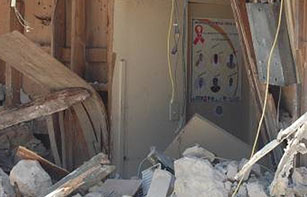
One year ago, on 11 January 2010, the Haiti earthquake devastated large parts of the capital, Port-au-Prince, with surrounding areas. Credit: UNAIDS
One year after a devastating earthquake in Haiti, the delivery of HIV prevention and treatment services appears to be back on track.
Over the past 12 months, Haiti has engaged in intensive HIV prevention campaigns in temporary settlements, where an estimated 800 000 displaced people are living. With the support of partners and UNAIDS, youth-sensitization and condom distribution programmes are now reaching tens of thousands of people.
Before the earthquake, UNAIDS estimated that 68 000 people were living with HIV in the three departments that were later impacted by the tremor—57% of the national total of 120 000. Within three months of the January 2010 earthquake, 80% of people on HIV treatment in these departments were able to access their antiretroviral drugs again. However, national coverage of antiretroviral treatment (43%) remains far from the goal of universal access.
“Every crisis presents an opportunity to move forward,” said Ernesto Guerrero, the UNAIDS Country Coordinator in Haiti. “The challenges posed by the earthquake in Haiti are no exception.”
Every crisis presents an opportunity to move forward. The challenges posed by the earthquake in Haiti are no exception.
Ernesto Guerrero, UNAIDS Country Coordinator in Haiti
In the aftermath of the earthquake, for example, HIV centers in Haiti have made strides in preventing mother-child-transmission of HIV. According to the US Centers for Disease Control and Prevention, an estimated 156 000 pregnant women in Haiti were tested for HIV in the fiscal year of 2010, compared to 132 000 in fiscal 2009.
Despite progress, Haiti continues to face repeated challenges. Health services are stretched and the cholera epidemic has further hindered the country’s ability to deliver HIV services. Sexual and gender-based violence in the temporary settlements is placing women at high risk of HIV infection.
According to the latest estimates from UNAIDS, 1.9% of the adult population in Haiti is living with HIV. Nearly half (46%) of all people living with HIV in the Caribbean reside in Haiti.

Feature Story
South Sudan addresses concerns of HIV-affected refugees
11 January 2011
11 January 2011 11 January 2011A version of this story first appeared at www.unhcr.org

UNHCR P.Buono
Mary returns to her village during her visit to the Kajo Keji area in southern Sudan
Mary Kiden wants to return to her home in South Sudan more than two decades after fleeing to north-west Uganda, but she has been worried about receiving the health care she needs to stay alive and to support her family.
Forty-one-year-old Mary is living with HIV and takes antiretroviral medicines. At Oliji in the West Nile region of Uganda, she receives the right help, but the infrastructure in South Sudan is in tatters as the region struggles to emerge from years of war between the Khartoum government and the rebel Sudan People's Liberation Army, and five years of fragile peace.
To help her make an informed decision about whether to return to southern Sudan, UNHCR recently invited Mary to join a ‘go-and-see’ visit to Kajo Keji in Central Equatoria state. But on the long drive to her home region, she started finding reasons why she could not return.
She told her fellow refugees that, as the family's only breadwinner, she feared she would not be able to support her mother and children. What worried her most was getting access to antiretrovirals and being stigmatized by people in her village, which did not even have a health clinic when she left all those years ago.
But when Mary finally reached her home region she was pleasantly surprised by what she saw. The town now has a sprawling health centre, complete with new buildings used for HIV testing and counselling, HIV information and drug distribution. The World Health Organization and the Sudanese Ministry of Health have also been supplying antiretroviral drugs for the past year.
Buoyed by her visit to the hospital, Mary next met members of the "Loving Club Association," including a long-lost cousin. This support group, which has received seed funding for livelihood projects from UNHCR, gathers approximately 230 people who are living with HIV. Profits have been used to buy land and provide food for members. According to UNAIDS there were around 260,000 HIV-positive people in Sudan in 2009.
Mary rounded off her visit by spending some time in her village with her cousin, Elia, and his wife, who is also HIV positive. She was delighted when Elia offered her a plot of fertile land if she and her mother returned.
On the drive back to Uganda, Mary said she felt that her concerns about access to drugs, medical care, support and acceptance had been allayed and that she hoped to return to Kajo Keji with her elderly mother and sons in 2012. "I am really very happy," she added.
Related

Feature Story
UNAIDS congratulates Annie Lennox on receiving the Order of the British Empire
04 January 2011
04 January 2011 04 January 2011
Michel Sidibé and Annie Lennox at a gender and HIV event in New York in 2010. Credit: UNAIDS/B. Hamilton
Annie Lennox, international singer and UNAIDS Goodwill Ambassador, has been awarded the Order of the British Empire (OBE), an honour conferred by Queen Elizabeth II. The announcement was made on 31 December as part of the 2011 New Year Honours list.
The honour recognizes Ms Lennox for her commitment and dedication to the global AIDS response and supporting development goals to end poverty.
Since becoming a UNAIDS Goodwill Ambassador in 2010, Ms Lennox has advocated for the greater inclusion of women in national HIV programmes as well as ending violence against women and girls.
“On behalf of the UNAIDS family, I congratulate Ms Lennox on receiving this prestigious award,” said UNAIDS Executive Director Michel Sidibé. “Ms Lennox is a tireless advocate for the voiceless and serves as a role model for millions of people around the world.”
Below is an interview with Ms Lennox that was first published in UNAIDS OUTLOOK
What has inspired you to be such a passionate advocate?
Several years ago I was given the opportunity to visit people and places that have been devastated by the AIDS pandemic, and I started to understand that women and children are on the actual frontline of this issue. The scale of wipe-out is simply massive, yet the subject is more than often off the Western media’s radar. As a woman and mother, I feel compelled to speak out, and try to raise awareness in the best way I can, to try to use my platform to do so.
As UNAIDS newest Goodwill Ambassador, what are your goals?
HIV is a complex issue, with many different facets that need to be addressed. Until there is a vaccine or a cure, the solutions are not straightforward. Up to this point in time my focus has been mainly on South Africa, a country with one of the highest HIV prevalences and where approximately one in three pregnant women are HIV-positive.
With the launch of the national strategic plan, which aims to halve the infection rate and double the roll-out of treatment, I’m hoping to see some kind of improvement; however, with the economic turndown, and the capping of donor budgets, I’m very concerned that these goals will not be reached, and additionally concerned as to what the coming future will look like, all over sub-Saharan Africa. My key objective lies with women and children, particularly with respect to access to life-saving treatment, which ought to be a fundamental human right, but tragically for millions of people is out of reach.
I will take advice from UNAIDS and try to utilize my resources and platform to keep sending out that message and do whatever is in my power to make a difference.
As a mother and woman I empathize and identify with my gender, especially with women in developing countries, who have so little in terms of emancipation, empowerment, human rights, access to education, medical treatment, reproductive rights…
Annie Lennox, UNAIDS Goodwill Ambassador
What can we do to move the AIDS response forward?
Good question! I ask myself that every single day. I think the only answer is to stay committed, and not give way to despair.
So, we would like to ask you a few lighter questions...
Where did you live as a child?
I spent my first eight years living with my parents in a two-roomed tenement flat in Aberdeen in the north-east of Scotland, then we moved into one of the first high-rise council blocks to be built in the city, which felt very modern and luxurious at the time, because we had a ‘proper’ bathroom, with a bath inside the flat, hot running water from the tap, a telephone and my own bedroom!
How do you relax?
I go to bed! The best place to be when I need to recharge and unwind!
What is your favourite food?
I love all kinds of food. Japanese and Italian particularly.
Who is your hero?
Nelson Mandela.
What is your favourite piece of music?
That’s an impossible question to answer really, because I love music in all its infinite forms. My taste is definitely eclectic. Perhaps the best way to answer this is to say that I love soul music. Go figure!
What is your favorite book?
Anything with pictures and a good cover!
What is your favorite film?
This is Spinal Tap.
What is your happiest memory?
Delivering both my daughters safely into the world.
What motivates you?
As a mother and woman I empathize and identify with my gender, especially with women in developing countries, who have so little in terms of emancipation, empowerment, human rights, access to education, medical treatment, reproductive rights, etc. I feel so grateful to have received these kinds of privileges in my life, and realizing that it is absolutely not a given for two thirds of the world’s poorest people (women) I want to contribute and use my platform and resources to try to make a difference.
What human quality do you most admire?
Kindness.
What do you most value in your friends?
Whatever it is that drew us together in the first place. Rapport is almost indefinable and certainly unquantifiable.
If you could be granted one wish in life, what would you ask for?
To heal the planet of all its violent destruction and madness. Well, you did ask!
What do you want to be when you grow up?
Fully enlightened.
Where is your favourite place?
My bedroom.
What is your motto?
I don’t have one... never joined the girl guides!
Related

Feature Story
UNAIDS in 2011
30 December 2010
30 December 2010 30 December 2010
As the world enters into the 30th year of the AIDS epidemic, UNAIDS will work to position the HIV response in a new global environment. Ten years after the United Nations Special Session on HIV/AIDS and the landmark adoption of the Declaration of Commitment on HIV/AIDS, member states are now preparing for the 2011 High Level Meeting on AIDS to review and renew future commitments for the AIDS response.
UNAIDS will be guided by the new UNAIDS strategy 2011–2015 , which aims to advance global progress in achieving country set targets for universal access to HIV prevention, treatment, care and support and to halt and reverse the spread of HIV and contribute to the achievement of the Millennium Development goals by 2015.
Only by working together to set our future course can we accelerate greater results for people
Michel Sidibé, Executive Director of UNAIDS
“This strategy was developed through a highly inclusive and open process—reflecting the needs and opportunities ahead of us,” said Michel Sidibé, Executive Director of UNAIDS. “It is about fundamentally transforming the global AIDS response.”
Adopted by the Programme Committee Board in December 2010, the strategy will also serve as reference in the lead up to the UN High Level Meeting on AIDS.
“The High Level Meeting will be a major milestone in the history of the AIDS response. Only by working together to set our future course can we accelerate greater results for people,” added Mr Sidibé.
The strategy will be underpinned by a new unified budget and accountability framework. The framework will operationalize the strategy, mobilize and allocate resources for its implementation, measure progress and report on results.

